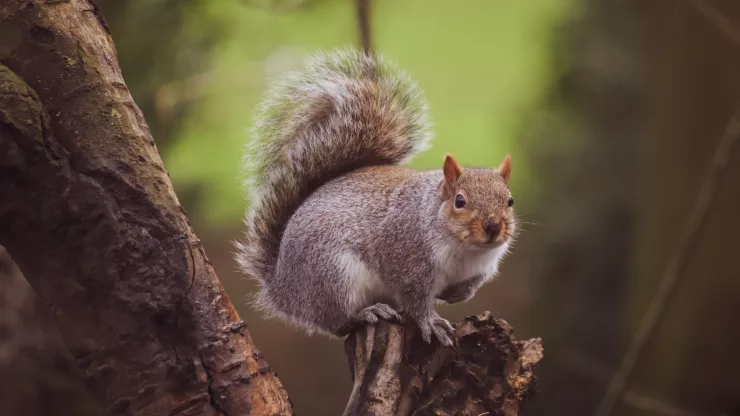Squirrels are a common sight in urban areas.
These small, furry creatures have adapted to the changes brought about by human expansion and have learned to thrive in the concrete jungle.
In this article, we will explore the physical and behavioral adaptations of urban squirrels, how they impact the environment, and the importance of understanding urban wildlife.
Jump to Section
Overview of Urban Squirrels
Squirrels are members of the rodent family, and there are over 200 species worldwide.
In urban areas, the most common species are the eastern gray squirrel and the fox squirrel.
These squirrels are known for their bushy tails, sharp claws, and nimble movements. They can be found in parks, backyards, and even on city streets.
Physical Adaptations of Urban Squirrels
Diet
Urban squirrels have adapted their diet to include human food.
While their rural counterparts rely on nuts, seeds, and fruits, urban squirrels have learned to eat anything from pizza to donuts.
This change in diet has led to higher levels of obesity and dental problems in urban squirrels compared to their rural counterparts.
Movement
Urban squirrels are more adept at navigating man-made structures than their rural counterparts. They use buildings, power lines, and bridges as pathways to move around the city.
They can also jump from tree to tree, often to avoid crossing roads.
Reproduction
Urban squirrels have shorter breeding seasons than their rural counterparts. This is because they have a constant supply of food, which allows them to breed all year round.
They also have smaller litters, which helps them conserve resources in the city.
Behavioral Adaptations of Urban Squirrels
Socialization
Urban squirrels are less social than their rural counterparts. They tend to be more territorial and aggressive towards other squirrels.
They also interact with humans more often, which can lead to a dependency on human-provided food.
Nesting
Urban squirrels have adapted to nesting in man-made structures. They often use attics, chimneys, and even cars as nesting sites.
This has led to an increase in squirrel infestations in urban areas.
Fearlessness
Urban squirrels have become fearless around humans. They have learned that humans are a source of food and are less likely to run away when approached.
This has led to an increase in squirrel-human interactions, both positive and negative.
Impact of Urban Squirrels on the Environment
Competition with Native Species
Urban squirrels compete with other animals for resources.
They often outcompete other squirrel species and small mammals for food and nesting sites.
This can lead to a decline in the population of native species.
Spread of Disease
Urban squirrels can spread diseases to humans and other animals.
They are carriers of ticks, fleas, and other parasites that can carry diseases such as Lyme disease and the plague.
Ecological Importance
Squirrels play an important role in the urban ecosystem.
They help disperse seeds and nuts, which helps plants grow.
They also serve as a food source for predators such as hawks and owls.
Understanding Urban Wildlife
In conclusion, urban squirrels have adapted to life in the city by changing their diet, movement, and reproductive habits.
They have also become less social and more fearless around humans.
While they play an important role in the urban ecosystem, they can also have a negative impact on native species and the spread of disease.
Future research on urban squirrel behavior is needed to better understand their impact on the environment.
It is important for humans to understand and appreciate urban wildlife to ensure a healthy and sustainable urban ecosystem.
FAQ
What should I do if I find a baby squirrel in the city?
If you find a baby squirrel, do not touch it. It is best to leave it alone and let its mother come back for it.
If the baby squirrel appears to be injured or in danger, contact a wildlife rehabilitation center for assistance.
How can I deter squirrels from my garden?
To deter squirrels from your garden, you can use physical barriers such as fences or netting.
You can also use squirrel-resistant bird feeders or plant squirrel-resistant plants such as daffodils and alliums.
Avoid using poison or other harmful methods to control squirrel populations.
Can squirrels carry rabies?
While squirrels can carry rabies, it is rare for them to transmit the disease to humans.
If you are bitten by a squirrel, seek medical attention immediately and contact your local health department for guidance.
I’m a nature enthusiast and creator of Metro Wilds and have spent years exploring the great outdoors.
With a passion for environmental conservation and sustainability, I have dedicated my career to writing about the beauty and wonders of nature, as well as the threats facing our planet.
Contact me at [email protected] for assistance.





